This exhibition aims to see the whole view of Korean beauty of the past and the present alive in the contemporary comparing Korean cultural heritages with modern and contemporary arts.
Based on the discourses made by art historians such as Ko Yuseop, Choi Sunu, and Kim Yongjun, ten properties have been selected to review their impact on and meaning to the modern and contemporary arts.
The show explores the relationship between traditional arts and modern/contemporary arts based on the four concepts: "seong" (sacred and sublime), "a" (elegant and simple), "sok" (decorative and worldly), and "hwa" (dynamic and hybrid).
These four ideas, the core values of East Asian aesthetics, have served as milestones for modern and contemporary artists to interpret tradition. In the same way, the understanding of tradition that modern and contemporary artists have also exerts a considerable impact on the research and descriptions of Korean art history prior to the nineteenth century. Traditional and modern/contemporary art have impacted and developed each other. The encounters of artworks and objects that transcend space and time will demonstrate the reciprocal relationship between traditional and modern/contemporary art and provide clues to the long-discussed question "what are Korean aesthetics?"
Cultural heritage can be interpreted from a new perspective when it is perceived not simply as objects marking a page in history but as art that can be appreciated even today. An accurate understanding of the forms and the contents of traditional art and its use as a source of inspiration solidifies the identity of contemporary art and leads to the development of Korean art in a more desirable direction. It is hoped that this show where the cultural heritages from museums and the artworks from art museums come face-to-face and respond to each other can facilitate a more complete understanding of Korean art and serve as a turning point for constructing a new paradigm for Korean aesthetics.
Section I, 聖 Sacred and Ideal
Section I explores the idealized aesthetics of Korean art from the Three Kingdoms Period to the Goryeo Dynasty, when flawless beauty was found and highlighted in response to Western realism in modern times.
#Goguryeo Kingdom Tomb Murals #Seokguram Grotto
#Goryeo Celadon #Obangsaek (The Five Colors of the Five Cardinal Directions)
#Dancheong (Traditional Decorative Coloring)
#From the Three Kingdoms Period to the Goryeo Dynasty
#Sacred and Ideal #Ideal Beauty
"聖" (seong) refers to religious sacredness and sublimity. "Those whose greatness transforms the world" are called seong, or sheng in Chinese characters. Mural paintings from the Goguryeo Kingdom embodying a longing for a world beyond death, and the Seokguram Grotto from the Unified Silla Period reflecting a belief in the Buddha are both sacred religious works that clearly demonstrate this core East Asian value. The supreme quality of art "seong" (sacred) corresponds to the aesthetics of Goryeo celadon in its impeccable forms and color. Obangsaek (the five colors of the five cardinal directions) in dancheong (traditional decorative coloring) used in ancient Korean architecture also represents the sacred.
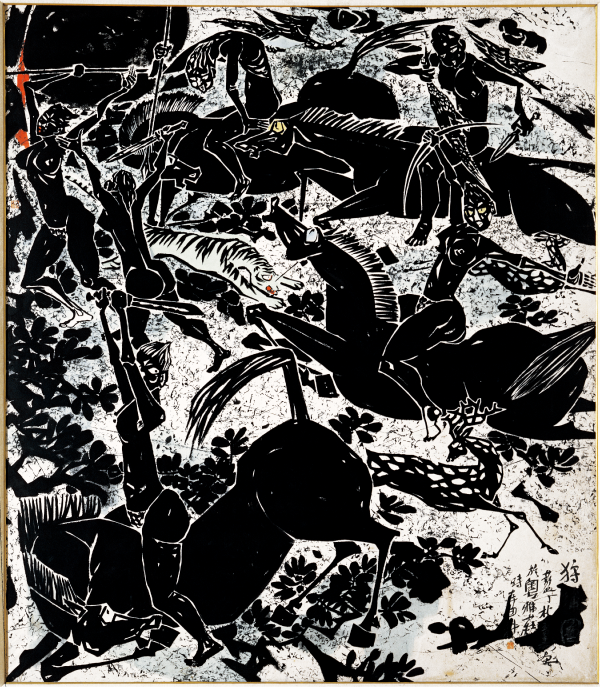
Park Nosoo, Hunting, 1961, color on paper, 217×191cm, Seoul Museum of Art collection
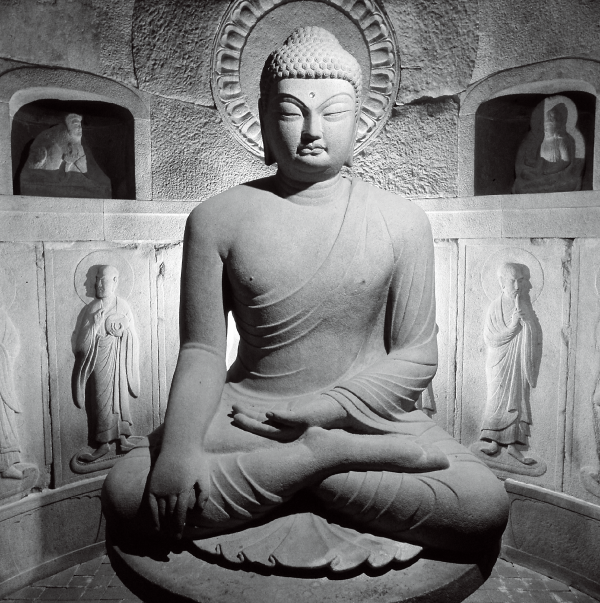
Han Seokhong, Main Buddha at Seokguram Grotto, 2000, National Research Institute of Cultural Heritage (bequest of Han Seokhong)
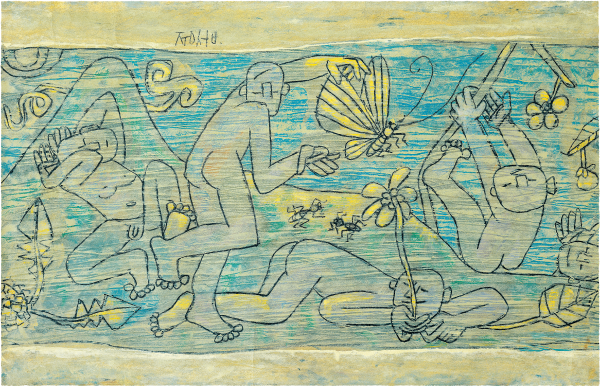
Lee Jungseop, Children in Spring, 1952-53, pencil and oil on paper, 32.6×49.6cm, private collection
Section Ⅱ, 雅 Elegant and Simple
After Korea's liberation from Japan, the painters sought to define the identity of Korean art by pursuing Korean Modernism and making inroads into the international art world in response to Western Modernism. Section II examines the Korean aesthetic of elegance and simplicity, and Korean expressionism that were pursued through an amorphous style.
#Gyeomjae #True-view Landscape #Chusa
#Literati Painting #White Porcelain #Moon Jar
#Aesthetics of Artlessness and Simplicity
#From the Japanese Colonial Era to the Liberation Period
#Elegant and Simple #Korean Expressionism
"雅" (a) bears the meaning of purity, simplicity, and elegance. It relates to an aesthetic taste for purity that differs from secular ones. True-view landscape paintings of Gyeomjae Jeong Seon based on his personal observations of and assimilation with nature, and literati paintings produced by Chusa Kim Jeonghui as a visual embodiment of his intelligence are the results of the pursuit of "a". Having a disposition towards purity eliminates various mundane attitudes, thus enabling a person to reach a state of great elegance. This parallels with the imperfection of pure white moon jars without any decoration.
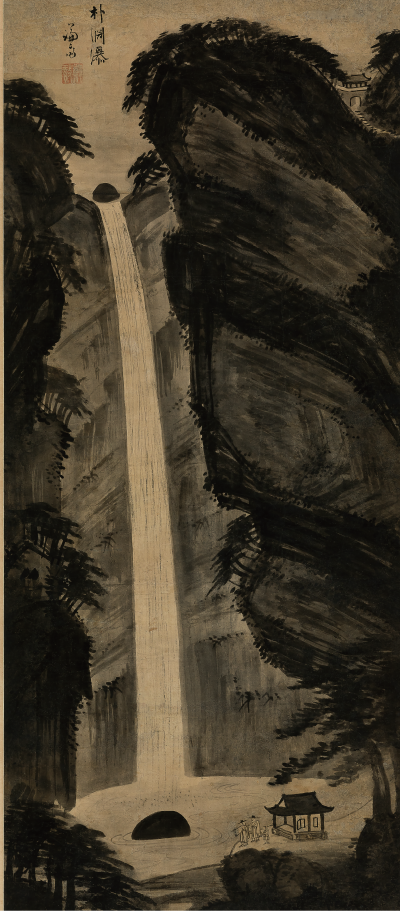
Jeong Seon, Bakyeon Falls, 18th century, Joseon Dynasty, ink on paper, 119.5×52cm, private collection
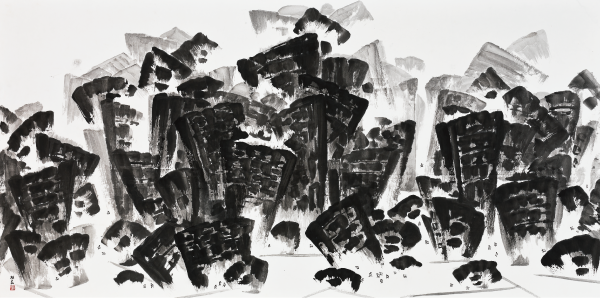
Rhee Chulryang, City at Dawn, 1986, ink on paper, 91×181cm, private collection
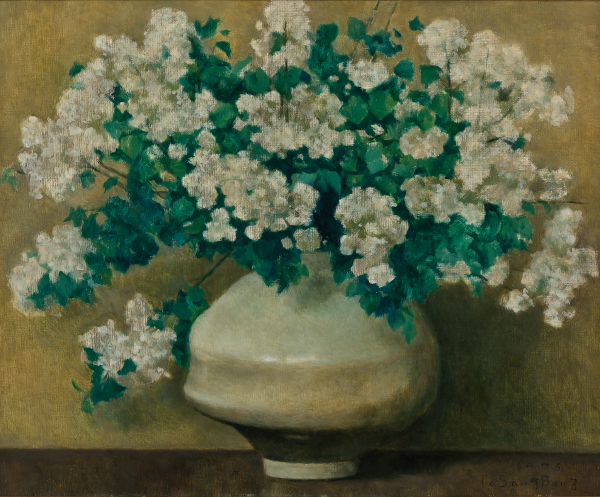
To Sangbong, Lilacs, 1975, oil on canvas, 53×65.1cm, private collection
Section Ⅲ, 俗 Decorative and Worldly
Section III explores the decorative aesthetics with more expressionistic properties that occurred as a reaction to academic art of the West as well as the ones of Joseon period and of modern times. And it examines the discourses on tradition in the 1970s and 1980s when an interest in tradition with return to nationalism reached its peak.
#Genre Painting #Painting of a Beauty #Minhwa
#Buddhist Art #Minjung Art
#Discourses on Tradition in the 1970s and 1980s
#Decorative and Worldly
#Aesthetics of Decorativeness #Nationalism
"俗" (sok) means being popular and worldly. It also refers to popularized tastes and literary works that anyone can enjoy. "Sok" is reflected in genre paintings, Minhwa, and paintings of a beauty from the Joseon period. "Sok, the sustenance of a properly established ethos" accords with the spirit and aesthetics of Buddhist paintings from Joseon when Buddhism was sought for the masses.
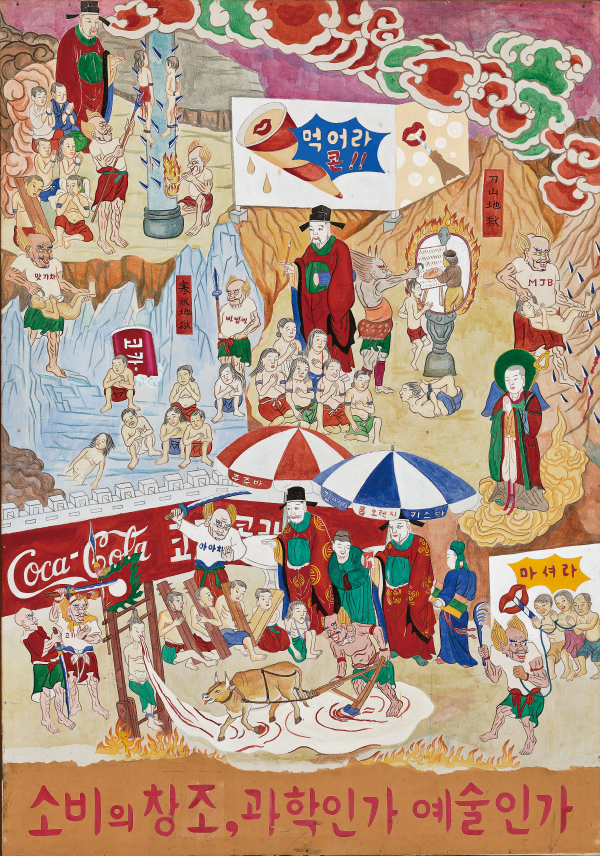
Oh Yoon, Marketing Ⅴ : Hell, 1981, mixed media on canvas, 174×120cm, private collection
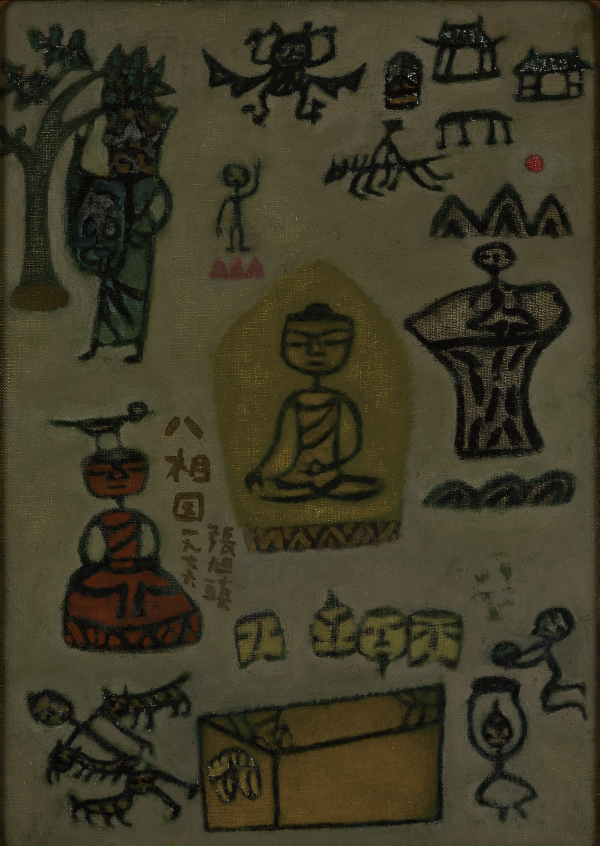
Chang Ucchin, The Eight Great Events, 1976, oil on canvas, 35×24.5cm, private collection ⓒCHANG UCCHIN FOUNDATION
Section Ⅳ, 和 Dynamic and Hybrid
Section IV explores the changes in the perception of Korean beauty since the 1990s, marked by the appearance of Postmodernism with co-existence and dynamic shifts of diverse values and aesthetics. It sheds a light on the harmony between traditional and contemporary art in the aesthetics of "seong" (sacred and ideal), "a" (elegant and simple), "sok" (decorative and worldly), and "hwa" (dynamic and hybrid), all of which represent Korean aesthetics.
#Golden Crown of Silla Kingdom #Earthenware Funerary Objects in the Shape of a Warrior on Horseback
#Buddha Head #Driving Force for Forming Korean Beauty
#Art after the 1990s #Dynamic and Hybrid
#Post-modernism #East Asian Art #Contemporary Art
"和" (hwa) refers to an amicable convergence of two opposing extremes. It is not just a simple joining of two different factors, but a kind of balance in which they coexist while maintaining their own characteristics. In traditional East Asian aesthetics, "hwa" means achieving unity through a harmony between two different things and a respect for differences rather than one element dominating another. Cultural heritage and contemporary art have been considered to be incompatible and to pursue distinct objectives. However, the aesthetics of "hwa" says they illuminate each other and coexist.
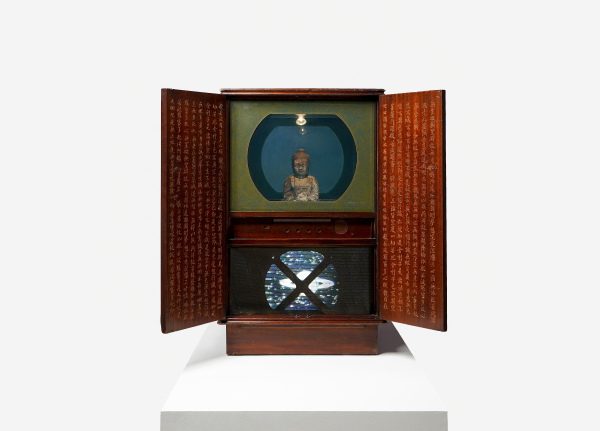
Paik Nam June, Heart Sutra, 1988, mixed media, 13(h)×50.6×94cm, private collection
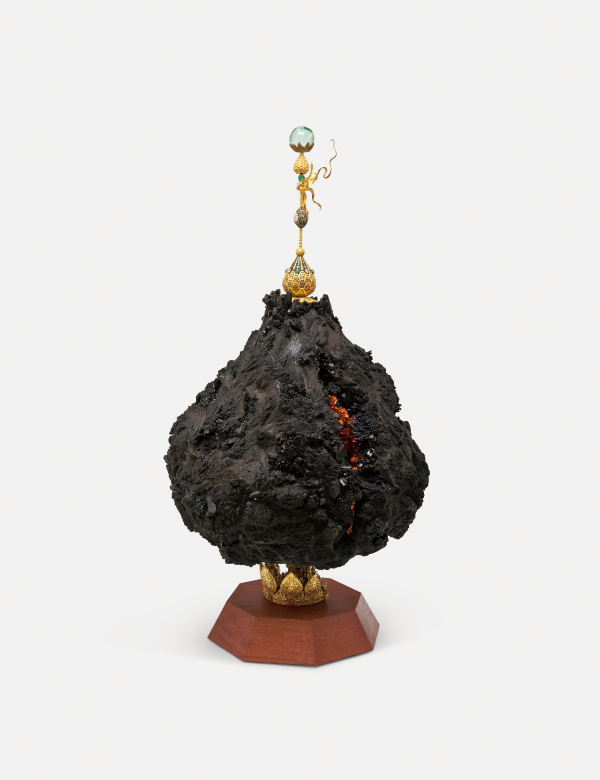
Yee sookyung, Moonlight Crown_Silla Gold Crown Shadow, 2021, glass buoy, brass, iron, 24K gold leaf, wood, 3D printed sculpture, pearl, glass, mother-of-pearl, 131.7 (h)× 65×66.4cm, private collection, Photo: Yang Ian ⓒYeesookyung
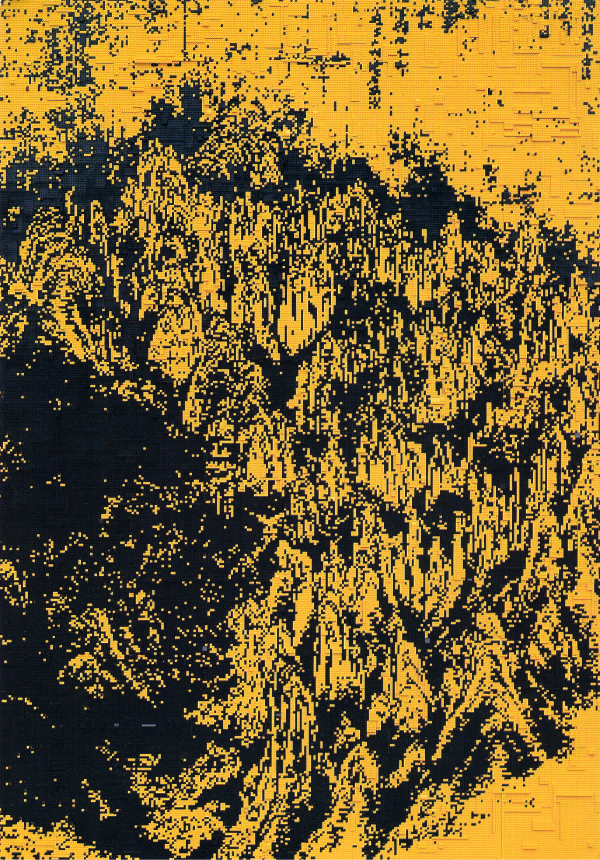
Hwang Inkie, Copy of Jeong Seon’s Comprehensive View of Mt. Geumgang, 2017, lego blocks on plywood, 288× 207.7cm, private collection
